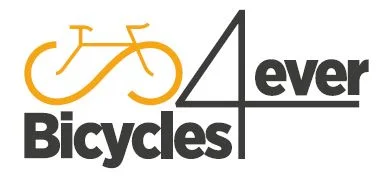5 reasons Why You Should Be Using Shorter Cranks with Road Cycling Academy
Source: Road Cycling Academy Youtube Channel: 5 reasons Why You Should Be Using Shorter Cranks
Video 5 reasons Why You Should Be Using Shorter Cranks with Road Cycling Academy
Video 5 reasons Why You Should Be Using Shorter Cranks with Road Cycling Academy YouTube Channel.
5 reasons Why You Should Be Using Shorter Cranks
The Benefits of Shorter Cranks for Road Cycling
Introduction
Road cycling is a popular sport and recreational activity enjoyed by people all around the world. As the sport has gained popularity, cyclists often look for ways to optimize their performance and comfort on the bike. One topic that has gained attention in the cycling community is the use of shorter cranks. In this article, we will explore the benefits of shorter cranks for road cycling, as explained by a professional bike fitter and coach.
Understanding the Need for Shorter Cranks
The use of shorter cranks can be beneficial for cyclists who have specific anatomical or physiological needs. The primary reason for considering shorter cranks is if an individual has limitations in hip flexion. This limitation can be determined by assessing the ability to bring the knee towards the chest while lying on the back. If there is difficulty in achieving this movement, it indicates a potential limitation in hip flexion.
Factors Influencing the Need for Shorter Cranks
Other factors that may influence the need for shorter cranks include poor hip internal rotation, short leg length, or participation in specific types of cycling events. Individuals with poor hip internal rotation may experience lateral knee splay while cycling, which can be addressed by using shorter cranks. Additionally, cyclists with a shorter leg length relative to their seat height may benefit from shorter cranks to optimize their pedaling efficiency and comfort.
Application of Shorter Cranks in Cycling Events
For triathletes, ultra-distance riders, and long-distance time trialists, using shorter cranks can provide aerodynamic advantages and improved comfort over extended periods of steady-state effort. The ability to maintain a lower and more aerodynamic position on the bike can lead to energy savings and improved performance. While there may be a trade-off in instant power production during sprint efforts, the overall benefits of shorter cranks in these endurance-focused events can outweigh the drawbacks.
Personal Preference and Physiological Considerations
The decision to use shorter cranks can also be influenced by individual physiological characteristics and riding style. For some cyclists, the preference for higher cadences and lower pedal force may align with the biomechanical advantages offered by shorter cranks. It’s important to consider how one’s specific riding style and physiological attributes may interact with the use of shorter cranks to determine the potential benefits.
Weighing the Pros and Cons
While shorter cranks offer various benefits for road cycling, such as improved hip clearance, higher cadence capabilities, and potential aerodynamic gains, there are also drawbacks to consider. The trade-off in instant power production during sprint efforts and the need to adjust pedaling technique are factors that should be taken into account. For some riders, the use of shorter cranks may require a period of adaptation to optimize their performance on the bike.
Conclusion
In conclusion, the decision to use shorter cranks for road cycling should be based on a comprehensive assessment of individual anatomical, physiological, and performance-related factors. By understanding the potential benefits and drawbacks, cyclists can make informed choices regarding the application of shorter cranks to optimize their riding experience. As with any equipment or technique adjustment, experimenting with shorter cranks and seeking professional guidance can help cyclists determine the best approach for their specific needs and goals.
The opinions expressed in this space are the sole responsibility of the YouTube Channel Road Cycling Academy and do not necessarily represent the views of CicloNews.

